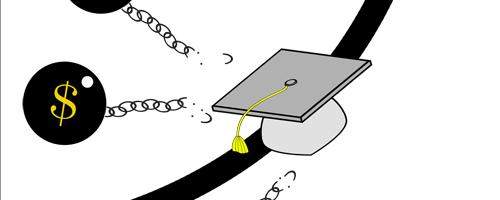New trolley line opens Friday
The Portland Streetcar will begin service to the South Waterfront district with the opening of a new extension at Portland State on Friday, October 20.
The new line will link the entire streetcar network together, stretching from Northwest 23rd Avenue to the growing waterfront area off Southwest Macadam Avenue. The newest section of the streetcar line will provide a connection to the Portland Aerial Tram, a 140-foot high tower that will run from the south waterfront to Oregon Health and Sciences University (OHSU).
The new line will extend through the River Blocks neighborhood to Southwest Moody and Gibbs, and will provide a car-free method of transport to the residential population of 350 people in South Waterfront. The line will also run adjacent to OHSU’s new Center for Health and Healing, which will open this December.
With the new extension, the Portland Streetcar grows to over three miles. The project is expected to cost over $15 million, including purchasing of three new streetcars. The streetcar will run on its own tracks, away from traffic, enabling it to travel at faster speeds.
”The streetcar provides an opportunity for residents and new businesses to make a working connection to the city,” said Kay Dannen, community relations manager of the Portland Development Commission. “The new extension will be connecting six neighborhoods together – moving people from district to district.”
The South Waterfront will be busy this winter with OHSU’s new center, as well as a new cafe and several housing development projects underway. Some predict that by the end of the decade, over 10,000 people will call the South Waterfront district their home.
A growing number of condominiums being built near the southwest waterfront will give the area its strongest population boost. The area will also see a boost in population during the day, when over 1,000 employees take up positions at OHSU’s newest building near the waterfront in December.
Though the new extension will be outside the fareless square, with the last stop for free transport at Southwest River Parkway, the line will end at the same point as the Portland Aerial Tram, creating another easy connection.
The line will be extended further into the Waterfront district next summer, adding to the 42 stops that are currently available, and creating a couplet running on Southwest Bond Avenue and Southwest Moody Avenue. Further extensions all the way to Southwest Bancroft Street will follow. The PDC, Federal transportation grants, and property owners in the South Waterfront district will fund the new extension.
The Portland Streetcar will be free to passengers this Friday, Saturday, and Sunday. The opening ceremony hosted by City Commissioner Sam Adams will take place at the new stop on Friday at 11 a.m. Other speakers will include Congresswoman Darlene Hooley, Congressman David Wu, and Congressman Earl Blumenauer.
The Portland Development Commission has been looking into the possibility of extending the streetcar line across the river into east Portland.
The streetcar was extended to the RiverPlace downtown development area in mid-March.
When the first extension of the streetcar line was added in July 2001, it was predicted to service roughly 3,500 riders daily. The Portland Streetcar now services over 9,000 riders a day.
Since the streetcar began service, it has also helped facilitate over $2.3 billion worth of development and business, Dannen said. “It’s not only used as a transportation option,” Dannen said. “It’s a huge economic development tool.”
Dannen said the new streetcar line will also provide a step towards the sustainability of the South Waterfront district. The extension will link the neighborhoods with the rest of Portland serviced by the streetcar, and offer a way for residents to access the rest of the city without having to use a car.
It is a model of advanced sustainability and environmental awareness on a large scale, with a whole neighborhood being aided by public transportation.



